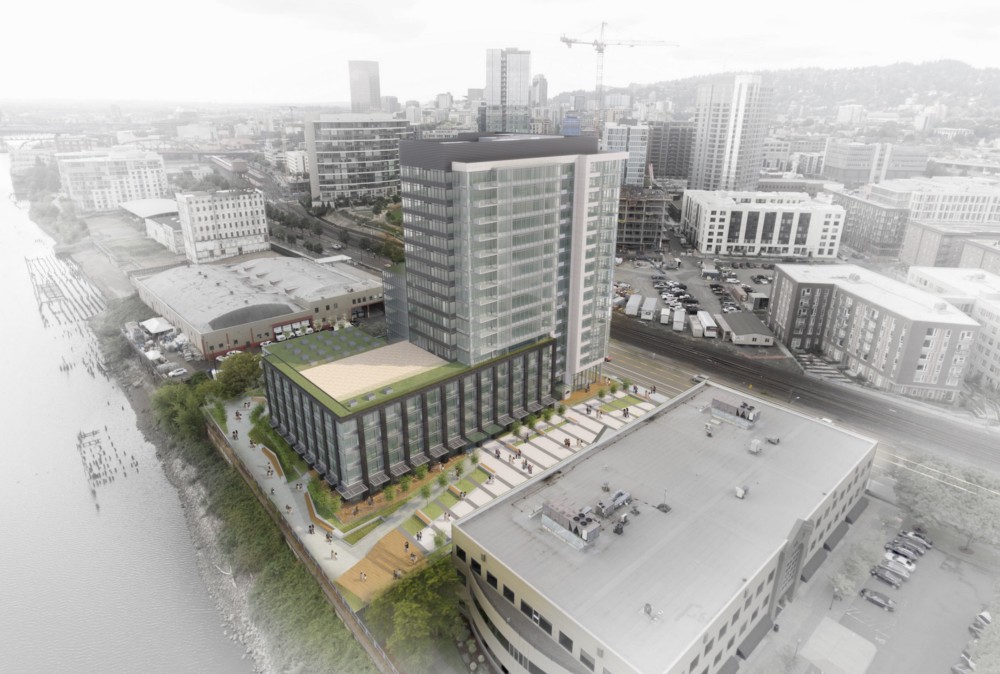Actions speak louder than words; blocking new housing will drive up rents
Nominally, at least, the Portland City Council is all about housing affordability. They’ve declared a housing emergency. In the last general election, City voters approved a $258 million bond issue to build more affordable housing. The Council has made permanent a city ordinance requiring landlords to reimburse tenants for moving expenses if they pursue a no cause eviction, or if the tenant moves after a 10 percent rent increase.
But ultimately housing affordability in the Rose City, as everywhere, hinges on whether enough supply gets built to accomodate the growing demand for urban living. And the city’s zoning code and project approval requirements are where the proverbial rubber meets the road in terms of expanding housing supply. And in a series of recent actions, the Portland City Council is effectively sabotaging the supply of new housing in a way that will ultimately worsen the city’s affordability problems.

Last week, the council voted to deny a building permit for a proposed 17-story, 275-apartment tower in the city’s booming Pearl District. Neighbors opposed the tower because it blocks views (from their recently completed condominium towers) of one of the city’s iconic bridges. Because it abuts the city’s Willamette River greenway, the building is subject to the city’s design review process. And while commissioners said they weren’t caving in on heights or views, they claimed that the building was somehow at odds with the city’s greenway policies. Portland for Everyone’s Michael Anderson has an excellent in-depth review of the proceedings in a post a Medium: “Open Season for NIMBY Appeals: Portland blocks 275 homes after Pearl District neighbors ask it to.” Briefly:
. . . the council unanimously voted to give the anti-housing activists exactly what they had been asking for: no new homes on the site.
It’s ironic because one of the virtues of Oregon’s planning system is that, for the most part, new developments that are allowable under a land use plan must be approved using “clear and objective” approval standards. The idea is that the city should be bound by what’s in its plan: so if an area is designated for apartments, the city is obligated to approve permits for an apartment in that area.
A loss of certainty kills off housing investment
Arbitrarily invoking a vague feeling of discomfort about whether a project is consistent with the greenway–and overturning a vote of the city’s design review commission in the process–sends a clear signal to developers that they can’t rely on what’s written in city plans and policies. In this case, the developer may be forced to return to the drawing board, and submit an entirely new proposal–and again run the gantlet of public outcry, and again confront a largely subjective determination as to whether the development meets with Council approval. Other developers are likely to heed this lesson.
As we’ve written at City Observatory, the city’s recently adopted inclusionary zoning law adds yet another layer of uncertainty. The law imposes a wide range of conditions on new 20-unit and larger apartment buildings, generally requiring that 20 percent of units be affordable, and that affordability be guaranteed for 99 years, and that the apartments be comparable in size and finishes to market rate units. The added cost of subsidizing such units is supposed to be made up by some combination of tax abatements, height and density bonuses, and parking requirement waivers. But since virtually no one has yet made their way through this process, it’s difficult (if not impossible) for developers to accurately assess how much time and money compliance will require. Again, this increase in uncertainty has a decidedly chilling effect on prospective investment. (New apartment proposals have come to a near standstill since the inclusionary housing ordinance went into effect a year ago.)
There’s one more problem: no one sees the buildings that don’t get built as a result of these disincentives and uncertainties. In the case of the now denied Fremont Place, we can publish a an accurate rendering of what the building would have looked like, had it been approved, and tell you that 275 households will now be competing for other housing in Portland. But going forward, many potential housing projects won’t even advance to the stage of having drawings, or marching through the approval process, because of uncertainty. Like Conan-Doyle’s hound that didn’t bark, we won’t see the housing that doesn’t get built. But we will likely feel it, as the still growing demand for urban living presses up against a finite urban housing stock.

